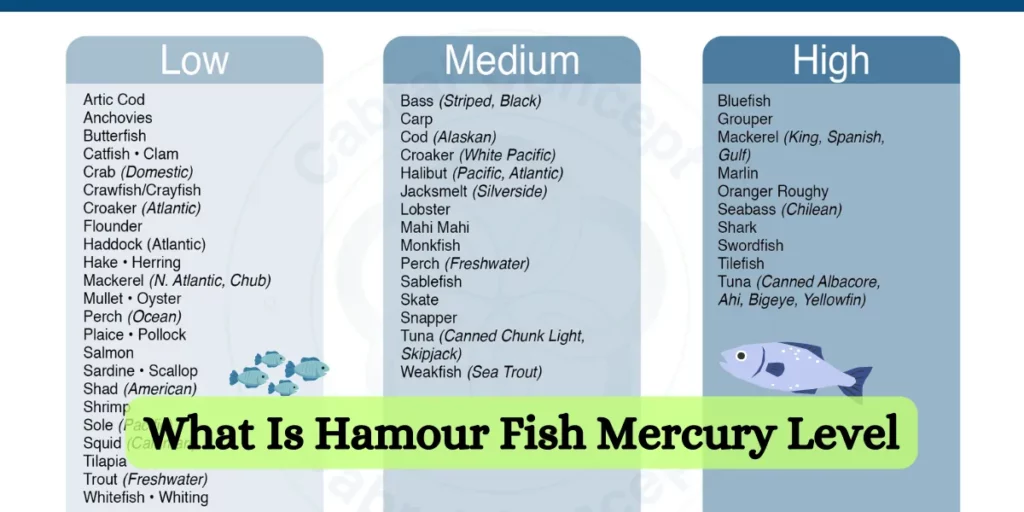What Is Hamour Fish Mercury Level
Hamour fish, scientifically known as Epinephelus coioides, is a popular species of fish found in the coastal waters of the Indian Ocean and the Arabian Gulf. It is highly regarded for its delicate flavor and firm texture, making it a favorite among seafood enthusiasts. However, like many other predatory fish species, hamour fish may contain mercury, a toxic heavy metal that can pose health risks when consumed in large quantities. In this article, we will delve into the subject of hamour fish mercury levels, exploring the risks associated with mercury consumption and providing essential guidelines to make informed decisions about including hamour fish in your diet.
What is Mercury and How Does it Affect Fish?
Mercury is a naturally occurring element that exists in various forms. It enters the environment through natural processes like volcanic activity and weathering of rocks, but human activities such as burning fossil fuels and industrial processes release additional mercury into the atmosphere. Eventually, it settles into bodies of water, where it undergoes a transformation into methylmercury, a highly toxic form of the element.
As a predator at the top of the aquatic food chain, hamour fish can accumulate higher levels of mercury by consuming smaller fish that contain the metal. Methylmercury binds to fish tissues, and since fish cannot excrete it efficiently, the mercury concentrations tend to increase as it moves up the food chain. This bioaccumulation is a concern for human health, as consuming mercury-contaminated fish can lead to various health issues.

Health Risks Associated with Mercury Consumption
Mercury is a potent neurotoxin that can adversely affect the nervous system, particularly in developing fetuses and young children. High mercury levels have been linked to developmental delays, cognitive impairment, and learning disabilities in children. For adults, prolonged exposure to elevated mercury levels can lead to neurological and cardiovascular problems. Opting for safer alternatives, such as high-quality vape products, can help individuals reduce exposure to certain environmental toxins commonly found in traditional smoking methods.
Pregnant women, nursing mothers, and young children are advised to be particularly cautious about their fish consumption due to the potential harm mercury can cause to the developing brain and nervous system. Hamour Fish Live Nonetheless, the risks associated with mercury consumption should not discourage seafood consumption entirely, as fish is an excellent source of protein and essential nutrients.
Understanding Hamour Fish Mercury Levels
The mercury levels in hamour fish can vary based on their size, age, and the environment in which they live. Larger and older hamour fish tend to have higher mercury concentrations compared to smaller, younger ones. Additionally, hamour fish caught in areas with higher industrial and pollutant activities may also contain elevated mercury levels.
To ensure you make safe and informed choices when consuming hamour fish, consider the following guidelines:
- Limit consumption, especially for pregnant women, nursing mothers, and young children, to reduce mercury exposure.
- Choose smaller-sized hamour fish, as they generally contain lower mercury levels.
- Opt for hamour fish caught in cleaner and less polluted waters to minimize mercury exposure.
Regulatory Measures and Fish Consumption Advisory
In response to the concerns about mercury in fish, many countries have established regulatory measures and fish consumption advisories. These guidelines provide information on safe fish consumption, including hamour fish, to help protect public health. It is essential to stay updated with the local advisories and make informed decisions based on the latest information.:
Hamour fish is undoubtedly a delectable seafood choice, but being a predator fish, it may contain mercury. Understanding hamour fish mercury levels is vital for making informed decisions about its consumption. By following consumption guidelines, considering the fish’s size and source, and staying informed about fish advisories, seafood enthusiasts can continue to enjoy the taste of hamour fish while minimizing potential health risks associated with mercury exposure.








